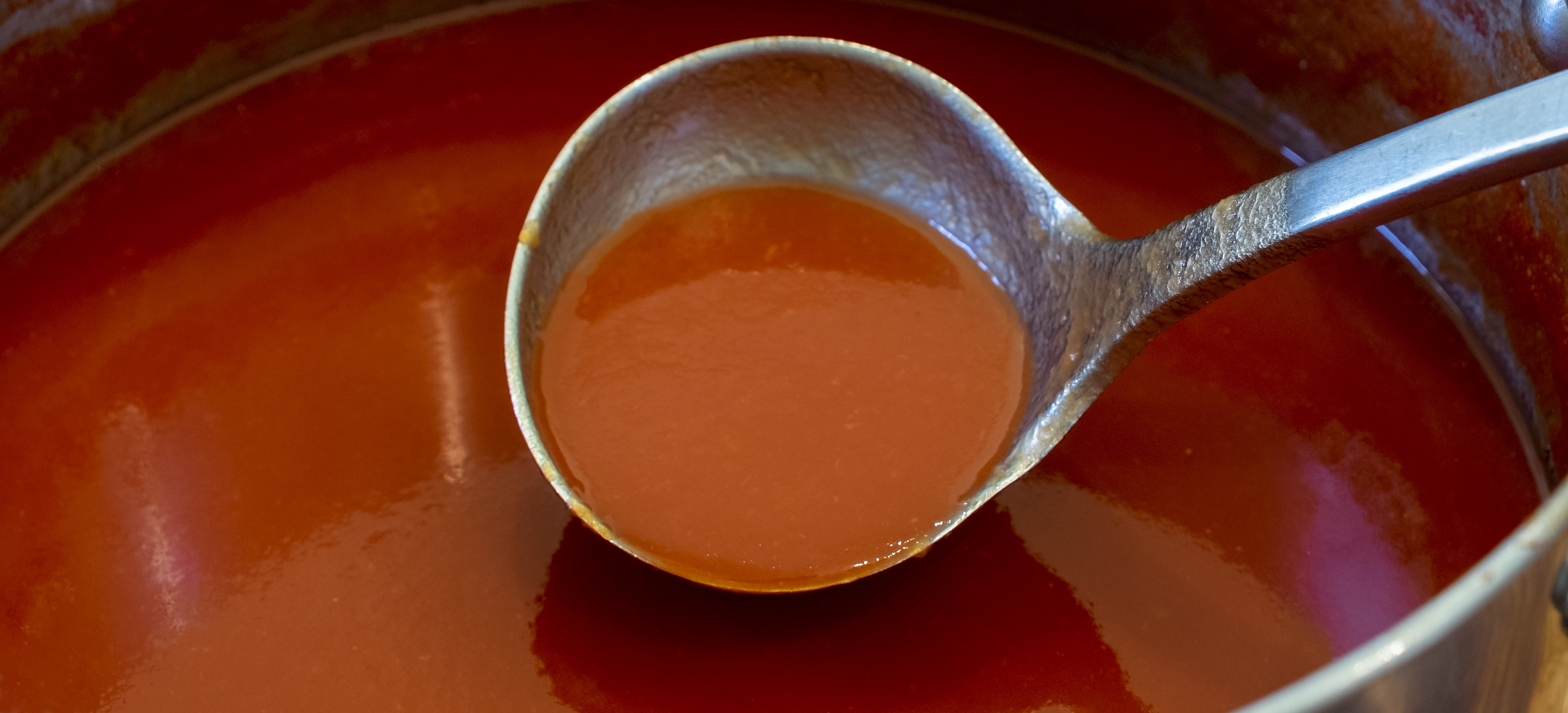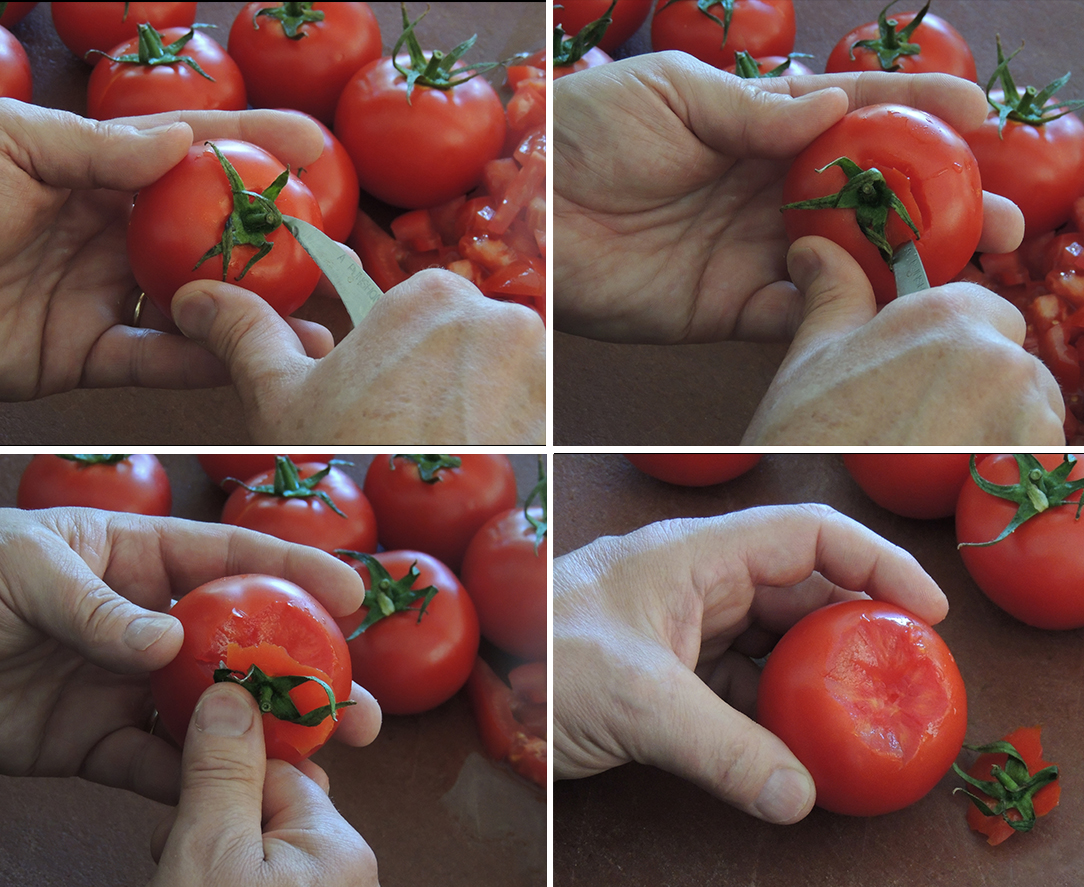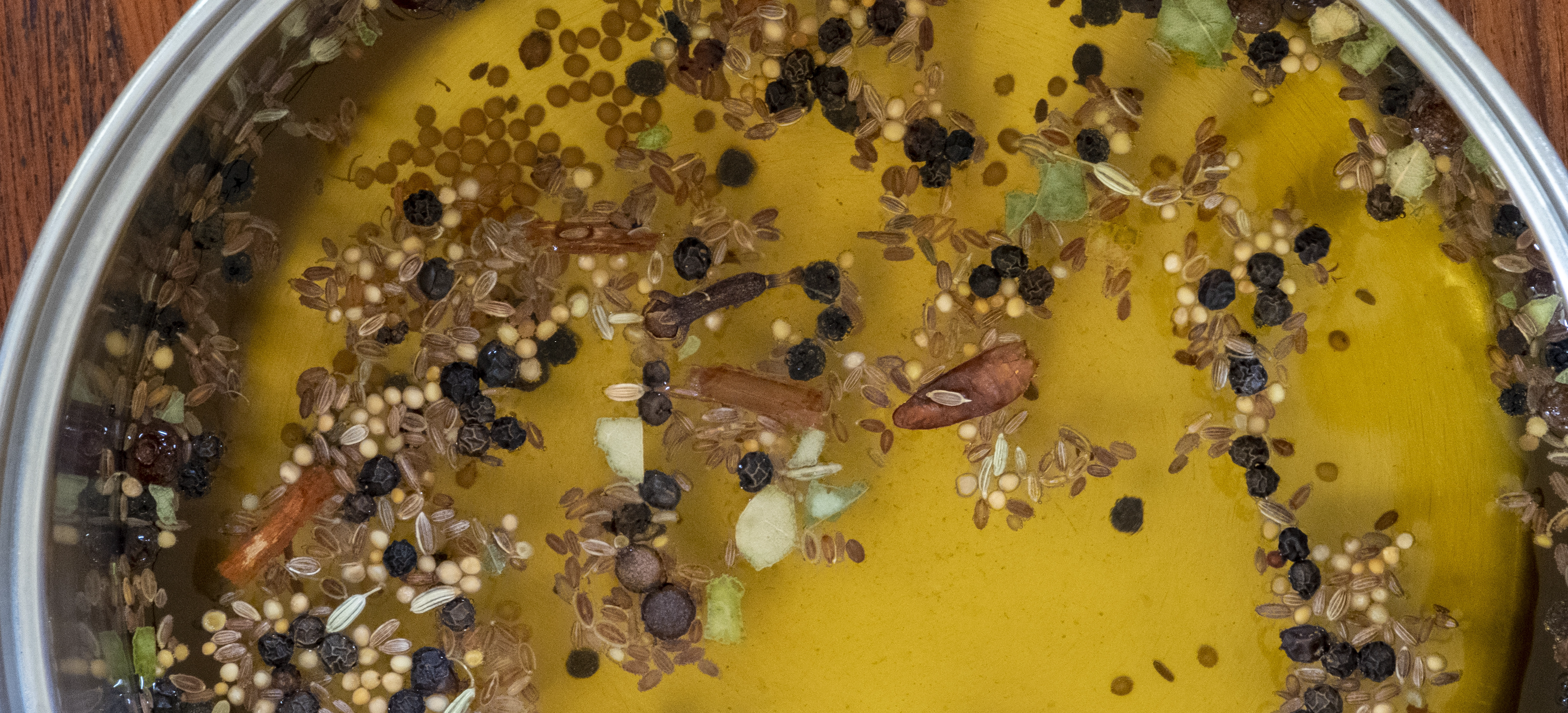Tomato Sauce
- Pickles, Chutney, Relish & Sauces

Tomato sauce captures the essence of summer. Rich red tomatoes, ripened on the vine, full of colour and flavour from the day’s heat are the secret ingredient. Simmered gently with onions and apples for added flavour and sweetness, this family favourite, is a pantry staple in our household. Friends and family always manage to score a bottle or two when they leave. When tomatoes are abundant, be sure to make your stash of tomato sauce for the year
- Preparation Time:
- 30 minutes
- Cooking Time:
- 60-90 minuts
- Quantity:
- 11 x 300 ml bottles
INGREDIENTS
- 700 ml
- Apple cider vinegar
- 1 tablespoon
- Pickling spice
- 4 kg
- Tomatoes, ripe
- 300g
- Brown onions, peeled, chopped
- 4
- Cooking apples, large
- 170g
- White sugar
- 1/2 teaspoon
- Sweet paprika
- 1/2 teaspoon
- Salt

METHOD
Make the spiced vinegar by placing the vinegar and pickling spices into a stainless-steel saucepan and simmer gently for 15 minutes. Pour into a strainer, discard the spices, and put the spiced vinegar aside.
Wash and gently dry the tomatoes. Remove the stem by inserting a small sharp vegetable knife a short distance from the stem. Using a slight inward angle, cut in a circular motion all the way around and remove the stem. Repeat the process until all the tomatoes have been prepared.
To prepare the onions, remove the onion skin and chop coarsely. Peel the apples, remove the core, and chop coarsely.
Chop the tomatoes, and place in a large stainless steel preserving pan or a heavy bottom saucepan with the chopped onions and apples. Simmer for approximately 1 hour until a thick pulp forms, stirring occasionally to prevent the mixture from sticking. If the mixture is too thick, add a small amount of water.
Remove from the heat and allow to cool slightly before putting the mixture through a food mill, or through a fine sieve with the back of a spoon, to separate out the tomato skin and seeds.
If using a food mill there are several types available for home preservers. These include the Mouli or Passa Verdura (Italian equivalent), and a fruit and vegetable strainer attachment for a KitchenAid or equivalent. Place the sauce into the food mill and turn the handle or pass the sauce through the kitchen aid attachment according to the instructions. Discard the seed and skin mass.
Place the sieved pulp, vinegar, sugar, salt and paprika into a clean preserving pan and simmer steadily until the sauce is thick and glossy. The water content of the tomatoes will influence the sauce consistency, so check it at this point, so the simmering time is likely to vary from batch to batch.
Place warm sterilised sauce bottles on a wooden board to prevent the bottles from breaking which can be caused by the heat differential between the cool bottle and hot sauce.
Use a funnel to pour the sauce into dry sterilised sealable bottles and fill to approximately 2.5 cm (1 inch) from the top of the bottle. Seal bottles while hot.
-
Label and store in a cool dark place in the kitchen or pantry
Once opened, store in the fridge.
-
For longer term storage, vacuum seal the bottles using either the Preserving Unit Method or the Stock Pot Method. The principles are the same. The difference is a preserving unit will have an internal removable rack for bottles to sit on and a tap to easily draw off the water. Some units may have an in-built thermometer.
Preserving Unit Method
Place sealed bottles/jars in Fowlers Preserving Unit or equivalent. Cover with water, bring to simmer and hold at a gentle simmer for 30 minutes. Turn off, remove lid and allow to stand for 5 minutes before removing.
Using the tap draw off some of the hot water so the level is sufficiently below the bottles to be able to safely remove them without scalding yourself. Remove from hot water bath and place on a board to cool.
Stock Pot Method
Line a large stock pot with some sheets of newspaper or a cut-down cake rack. Place the bottles in the pot, allowing space between each bottle so they don’t touch. This lining will protect the bottles from direct heat and prevent cracking. Cover with water, bring to simmer and hold at a gentle simmer for 30 minutes.
Turn off, remove lid and allow to stand for 5 minutes before removing. If possible, remove some of the hot water so the level is sufficiently below the bottles to be able to safely remove them without scalding yourself. Remove from hot water bath and place on a board to cool.
NOTES
- Vine ripened red tomatoes make the best sauce. Colour and flavour comes from both the juice and skin so allow them to develop their full flavour and colour potential on the vine and it will produce a more intense sauce.
- If using store bought tomatoes that haven’t been vine ripened, allow them to ripen as much as possible before use. The flavour will not be as intense but will be better than using only partially ripe tomatoes.
- When making large quantities, the acidity in the tomatoes may aggravate sensitive skin. This can be prevented by using disposable gloves
- When filling bottles or jars, leave a 2.5 cm (1 inch) gap. This allows sufficient room for the sauce to expand while in the preserving unit
- A blender or vitamiser is not recommended as it will liquify the sauce, produce a bitter flavour from the ground seeds and significantly change the consistency of the final sauce as it will be aerated.
- The hot sauce will be a slightly thinner consistency at this stage. It will thicken slightly as it cools.
- During the sieving process take care not to leave any pulp behind otherwise the sauce will not thicken.
- Four kilos is a good batch size for most households. Any larger and it is likely to require an investment in a larger preserving pan or stock pot.
- Good quality jars should be used in all preserving, particularly when they are processed in a hot water bath. Thin jars often cannot withstand the temperatures and may crack either in the bath or on and or after removal. Avoid the disappointment and invest in some good jars from a homewares or preserves outlet. Select jars that have non-reactive lids as the vinegar solution can cause the lids to rust over time.
- The type and colour of the sugar and vinegar used will affect the final colour and flavour of the tomato sauce. Malt vinegar and brown sugar will produce very dark brownish red sauce with a more earthy/molasses background flavour, while white wine vinegar or apple cider and white sugar will produce sauce that has a fresher and brighter tomato flavour. This is a matter of personal choice.
- Take care to only use vinegar which has a 5% minimum acetic acid content. The acetic acid content acts as the principal preservative and any lower quantity will compromise the safety of your preserves. Commercially available vinegar is 5%, however most homemade vinegars do not achieve this level.
- Variations: Add chilli and or garlic to taste.
 Making spiced vinegar : pickling spices simmering in apple cider vinegar.
Making spiced vinegar : pickling spices simmering in apple cider vinegar.
